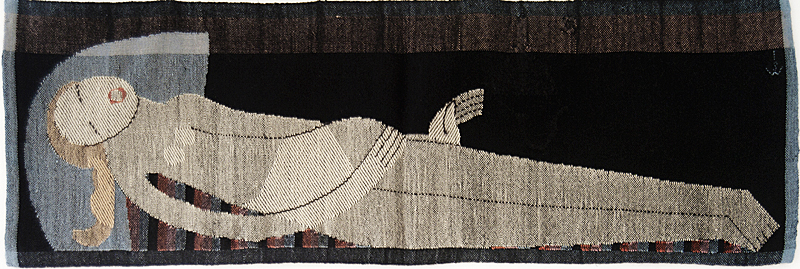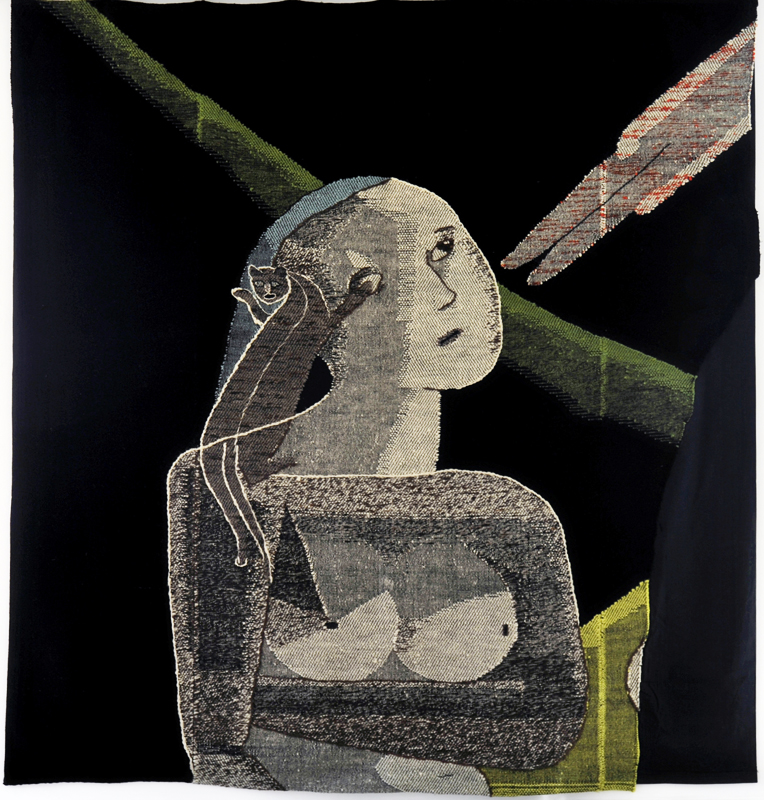
Exhibition from 1st October to 13 November at Castle Willard, 15 km north of Schwerin/Germany, organized by the Art Association Schwerin.
In my blog entry to the exhibition of Johanna Schütz-Wolff in Leipzig I wrote:
Johanna Schütz-Wolff is one of the artists unjustly ignored by history, despite the fact that she enjoyed greater initial success than, say, Anni Albers or Gunta Stölzl. Her wall hanging, “Die Liegende (Recumbent Woman)” was awarded a silver medal at the 1928 “Deutsche Kunst (German Art)” exhibition held at the Düsseldorf Kunstpalast. In late 1929 she participated in the “Moderne Bildwirkereien (Modern Tapestries)” exhibition organised by gallery director and art historian Ludwig Grote at Kunstverein Dessau, with the aim of “leading tapestries out of their exile in the applied arts”. The exhibition later toured nine German cities, displaying tapestries by Ernst Ludwig Kirchner, Karl Schmidt-Rottluff, Hans Arp, Wenzel Hablik, Anni Albers and Gunta Stölzl. Johanna Schütz-Wolff’s work left the greatest artistic impression on Ludwig Grote. Her male nude became a sensation!
As a final comment, I wondered where German and international textile art would be today if the “Thousand-Year Reich” had never existed. The new weaving principles established in those days did not see a revival until the 1960s, emerging again in the USA: the principles of artists weaving their own work; pieces being true to the materials employed and authentic; and, in addition, the power of experimentation and abstract design. Today this is considered the beginning of weaving as an art form in its own right. However, there are forgotten precursors among whom Johanna Schütz-Wolff is probably one of the most important names.
Now the works of this exceptional artist are on view again in the North of Germany. For those who have the possibility to go there, do not miss it! poster_exhibition
